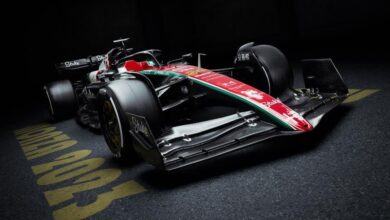Sergio Perez’s Unpenalised Start at Saudi GP Raises Questions on F1 Jump-Start Policy
Recent footage from the Saudi Arabian Grand Prix revealed Sergio Perez’s slight movement at the start line, yet he faced no penalties. This incident stirs discussions on FIA’s jump-start detection criteria.
Key Takeaways:
- Unnoticed Movement: Sergio Perez’s subtle advance at the Saudi Arabian GP’s start line went unnoticed by the FIA’s jump-start detection system, similar to a previous incident involving McLaren’s Lando Norris.
- Technology-Driven Decisions: The FIA’s system, based on transponder data, is the primary tool for determining jump-starts. Neither Perez nor Norris’ movements were detected as violations, highlighting the system’s threshold for penalty decisions.
- Regulatory Framework: F1’s historical approach to minor movements at the start line, guided by Article 48.1 a) of the Formula One Sporting Regulations, often results in no penalties for such incidents.
The Saudi Arabian Grand Prix brought an intriguing scenario into the spotlight, with Red Bull’s Sergio Perez showing a minimal but discernible movement at the race’s onset. The lack of any subsequent inquiry or penalties for Perez has raised questions about the enforcement of F1’s jump-start rules.
Analyzing this situation sheds light on the mechanisms and criteria the FIA employs in such circumstances. Their jump-start detection system, equipped with highly sensitive transponders on each car, is central to this process. Interestingly, this system didn’t register Perez’s slight movement as a violation, a decision akin to the handling of a similar situation involving Lando Norris of McLaren.
These decisions are rooted in the framework of the Formula One Sporting Regulations, specifically Article 48.1 a). This article emphasizes that the judgment of jump-starts should be based on transponder data. Following Norris’ incident, the FIA released a statement explaining their decision, underscoring that the transponder data did not indicate a jump start, leading them to take no further action.
The discussions surrounding these incidents highlight the nuanced balance between technological accuracy and the spirit of competition in Formula 1. While some fans and observers may question the leniency shown in these cases, it’s clear that the movement of Perez’s RB20 was so minor that it failed to trigger the transponder’s threshold.
This situation illuminates the evolving nature of rule enforcement in high-stakes sports like Formula 1. As technology continues to advance, the parameters for decision-making in sports are also shifting, bringing new challenges and debates to the forefront of the racing world.



